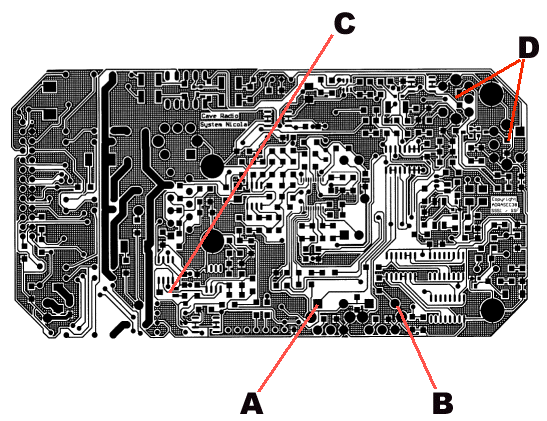
View of the surface mount side of the circuit board (the Toko coil adjustments are on the other side!)
The board should be made up into its box with all the front panel components. It is recommended that the first test be performed with a power supply set toAdjustment of the circuit board.

View of the surface mount side of the circuit board (the Toko coil adjustments are on the other side!)